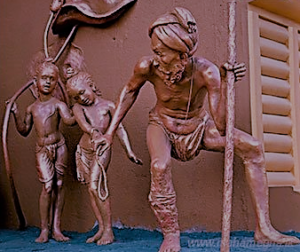The word “elephantiasis” was first introduced to Sri Lanka through Wesantara Jataka story. However, no reference has been made to the prevalence of the disease in Ceylon in any of the early medical or other literature available in this country. The earliest reference to the prevalence of the disease was made by John Davy in 1821 in his book entitled “An account of the interior of Ceylon and its inhabitants with travels in that Island”.
Reference to the incidence of the disease was also made in 1879 in the Administration report of the Principal Civil Medical Officer and Inspector General of Prisons. In this report reference has been made to 3 cases of elephantiasis- One case at Kandy hospital and 2 cases at Matale hospital in the year 1892.


